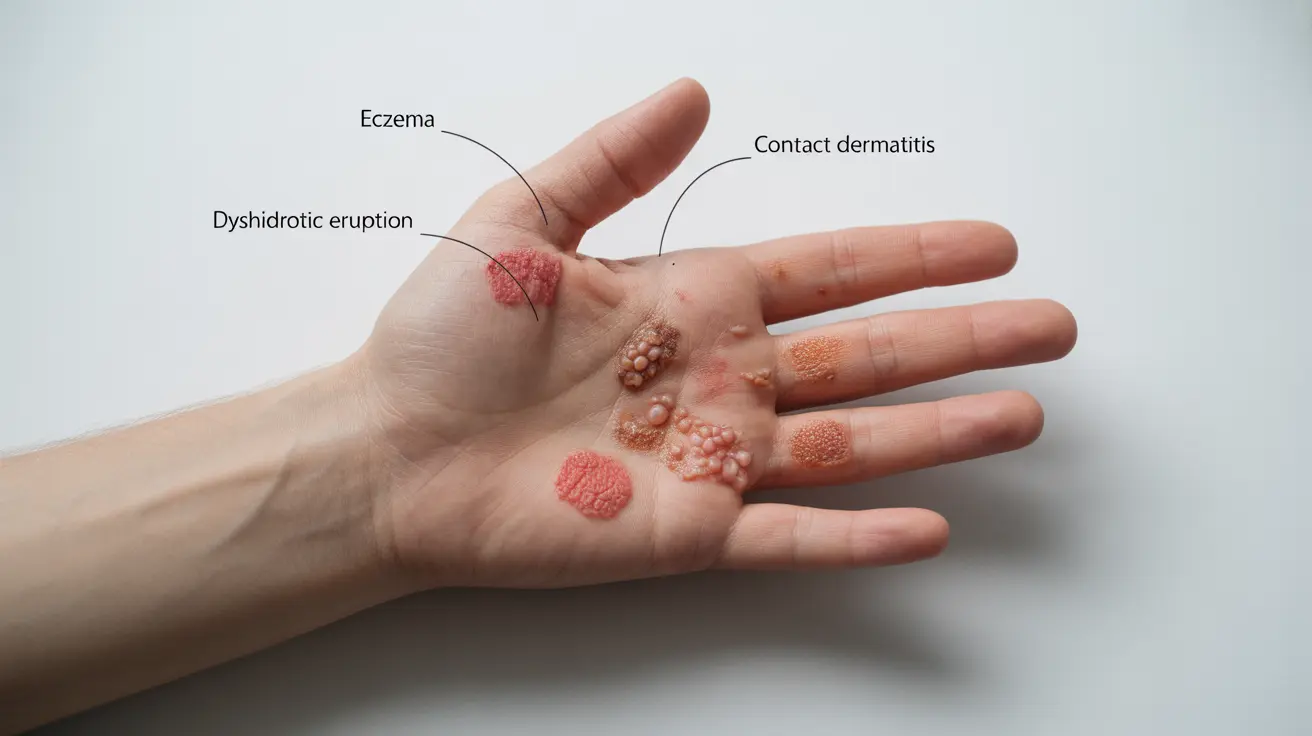A rash on the palms of your hands can be both uncomfortable and concerning. These distinctive skin conditions can manifest in various ways, from itchy, red patches to small, fluid-filled blisters. Understanding the underlying causes and available treatments is crucial for effective management and relief.
While palm rashes are generally not life-threatening, they can significantly impact daily activities and quality of life. This comprehensive guide explores the common causes, symptoms, and treatment options for palm rashes, helping you make informed decisions about your skin health.
Common Causes of Palm Rashes
Several conditions can trigger a rash on the palms, including:
- Contact dermatitis from exposure to irritants or allergens
- Dyshidrotic eczema (pompholyx)
- Allergic reactions to medications or foods
- Bacterial or fungal infections
- Scabies infestations
- Autoimmune conditions
- Hand, foot, and mouth disease
- Psoriasis
Identifying Different Types of Palm Rashes
Contact Dermatitis
This common condition occurs when the skin comes into contact with irritating substances or allergens. Symptoms typically include redness, itching, and burning sensation. Common triggers include:
- Harsh soaps and detergents
- Industrial chemicals
- Latex gloves
- Certain metals (like nickel)
- Plant substances
Dyshidrotic Eczema
This condition presents with small, intensely itchy blisters on the palms. The blisters may be accompanied by:
- Burning or prickling sensation
- Redness and inflammation
- Scaling and cracking of the skin
- Increased symptoms during stress or seasonal changes
Home Treatment Options
Many palm rashes can be managed effectively at home with these approaches:
- Cool compresses to reduce inflammation
- Over-the-counter hydrocortisone cream
- Moisturizing regularly with fragrance-free lotions
- Avoiding known triggers and irritants
- Using gentle, hypoallergenic soaps
- Taking oral antihistamines for allergic reactions
When to Seek Medical Attention
Certain symptoms warrant professional medical evaluation:
- Severe pain or swelling
- Signs of infection (warmth, pus, fever)
- Rash spreading rapidly
- Blistering that becomes severe
- Symptoms persisting beyond two weeks
- Interference with daily activities
Prevention Strategies
To minimize the risk of developing palm rashes:
- Wear protective gloves when handling chemicals or irritants
- Keep hands clean and dry
- Use mild, fragrance-free products
- Maintain good hand hygiene
- Monitor and avoid known allergens
- Manage stress levels effectively
Frequently Asked Questions
What are the common causes of a rash on the palms of the hands?
Common causes include contact dermatitis, dyshidrotic eczema, allergic reactions, infections, and autoimmune conditions. Environmental factors, chemicals, and stress can also trigger palm rashes.
How can I treat a rash on my palms at home?
Home treatments include using cool compresses, applying over-the-counter hydrocortisone cream, moisturizing regularly, avoiding triggers, and taking antihistamines if the rash is allergy-related.
What are the symptoms of dyshidrotic eczema on the palms, and how is it managed?
Dyshidrotic eczema presents with small, itchy blisters on the palms, often accompanied by burning and scaling. Management includes moisturizing, avoiding triggers, using prescribed topical medications, and stress reduction techniques.
Can a rash on the palms be a sign of an allergic reaction, and how is it differentiated from other conditions?
Yes, palm rashes can indicate allergic reactions. These typically develop quickly after exposure to allergens and may be accompanied by itching and burning. Unlike other conditions, allergic rashes often improve when the trigger is removed and respond well to antihistamines.
What are the signs that a palm rash needs medical attention, and when should I see a doctor?
Seek medical attention if you experience severe pain or swelling, signs of infection, rapid spreading, severe blistering, persistent symptoms lasting over two weeks, or if the rash significantly interferes with daily activities.




